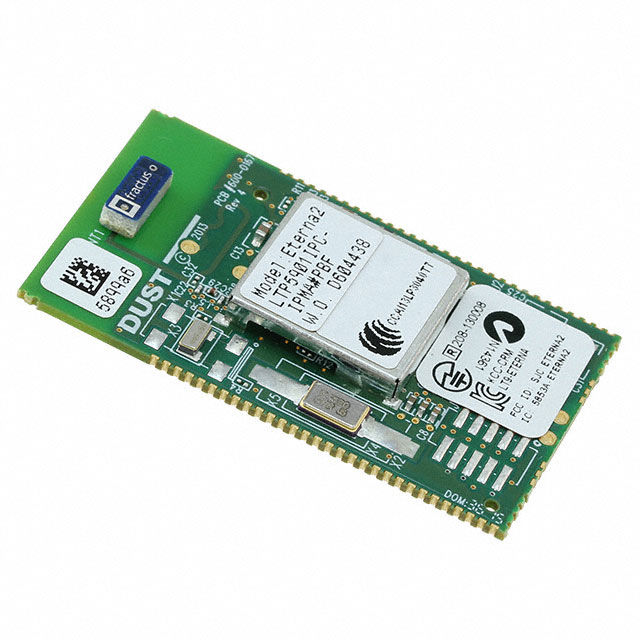What Makes Display Modules LCD OLED Character and Numeric Essential for Today's Technology?
- joddiemarshall6
- Nov 1, 2024
- 3 min read
In the ever-evolving world of technology, Display Modules LCD OLED Character And Numeric are fundamental components that enhance user interaction with electronic devices. These modules serve as the visual interface between humans and machines, displaying essential information in both character and numeric formats. From simple calculators to complex industrial machinery, these display modules have revolutionized how we perceive and interact with digital information. Their versatility and efficiency make them indispensable in modern electronics, providing clarity and precision in data presentation.
Understanding Display Modules
Display modules are crucial in presenting information visually, allowing users to interact seamlessly with various devices. They come primarily in two types: LCD (Liquid Crystal Display) and OLED (Organic Light Emitting Diode).
LCD Modules:
Utilize liquid crystals regulated by electric currents.
Offer low power consumption, making them energy-efficient.
Provide excellent visibility under direct sunlight.
OLED Modules:
Composed of organic compounds that emit light when electrified.
Deliver higher contrast ratios with deeper blacks.
Allow for thinner and more flexible display designs.
Understanding these modules helps in selecting the appropriate display technology for specific applications, ensuring optimal performance and user satisfaction.
LCD vs. OLED: A Comparative Overview
Choosing between LCD and OLED display modules depends on various factors, including application requirements and environmental conditions.
Advantages of LCD:
Energy Efficiency: Consumes less power, ideal for battery-operated devices.
Cost-Effectiveness: Generally more affordable due to mature technology.
Durability: Less prone to screen burn-in, enhancing longevity.
Advantages of OLED:
Superior Image Quality: Offers vibrant colors and higher contrast.
Design Flexibility: Enables ultra-thin and flexible displays.
Faster Response Times: Better performance in displaying motion.
Understanding these advantages allows designers and engineers to make informed decisions, balancing performance with cost and durability.
Character and Numeric Displays in Focus
Character and numeric displays are specialized modules designed to present textual and numerical information efficiently.
Character Displays:
Capable of displaying a set number of characters.
Commonly used in devices like calculators and digital meters.
Provide clear and legible text output.
Numeric Displays:
Specifically designed to display numbers.
Ideal for clocks, timers, and measurement instruments.
Offer high readability for quick data interpretation.
These displays are essential for applications where conveying information succinctly and clearly is paramount, enhancing the overall user experience.
Applications of Character and Numeric Display Modules
The versatility of LCD and OLED character and numeric displays makes them suitable for a wide range of applications.
Consumer Electronics:
Televisions and monitors.
Smartphones and tablets.
Digital watches and fitness trackers.
Industrial Equipment:
Control panels and interfaces.
Measurement and diagnostic tools.
Automation systems.
Medical Devices:
Patient monitoring systems.
Diagnostic imaging equipment.
Automotive Displays:
Dashboard indicators.
Infotainment systems.
Their ability to provide clear and reliable information makes them indispensable across various industries, enhancing efficiency and user satisfaction.
Advantages of Using LCD and OLED Display Modules
Incorporating these display modules into devices offers numerous benefits that contribute to a superior user interface.
Enhanced Visual Clarity:
Sharp and vibrant displays improve readability.
High-resolution screens provide detailed images.
Energy Efficiency:
Prolongs battery life in portable devices.
Reduces overall power consumption in larger systems.
Design Flexibility:
OLEDs allow for innovative designs with flexible screens.
Slim profiles contribute to sleek and modern device aesthetics.
Improved User Experience:
Responsive displays enhance interaction.
Intuitive interfaces facilitate ease of use.
These advantages not only improve the functionality of devices but also contribute to a better search generative experience, ensuring users can access and interpret information effectively.
Conclusion
Display modules, particularly LCD and OLED character and numeric types, are integral to modern technology. They serve as the bridge between complex electronic systems and the user, providing essential information in an accessible format. Their continued development and integration into various devices underscore their importance in enhancing user interfaces and overall device performance. As technology advances, the role of these display modules will only become more significant, driving innovation and improving how we interact with the digital world.



Comments